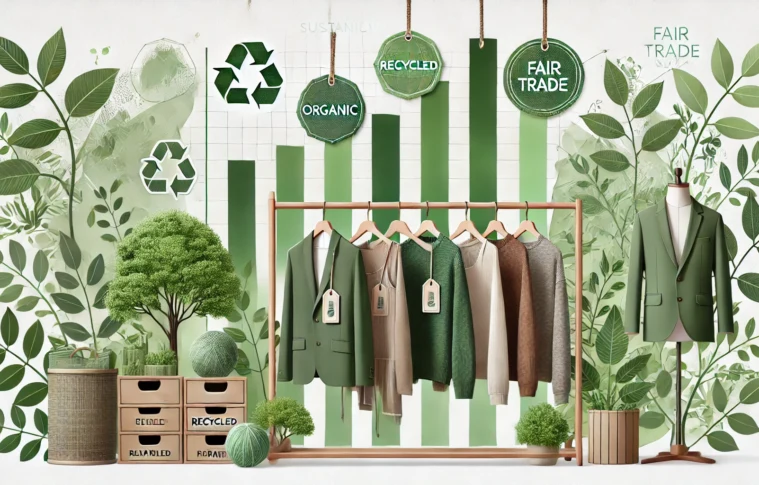In recent years, sustainability has moved from a buzzword to a business imperative in the fashion industry. With consumers increasingly prioritizing ethical practices and environmental stewardship, fashion brands are reimagining their strategies to align with these evolving expectations. From incorporating sustainable materials to adopting circular economy practices, the industry is undergoing a significant transformation.
The Business Imperative for Sustainability
1. Shifting Consumer Expectations
Millennials and Gen Z consumers, who represent a significant portion of the market, are driving demand for sustainable fashion. Reports indicate that these groups are more likely to support brands that prioritize environmental and ethical considerations.
2. Regulatory Pressures
Governments worldwide are introducing stricter regulations to curb environmental damage caused by fast fashion. Brands must adapt to stay compliant and avoid reputational risks.
3. Competitive Advantage
Sustainability is no longer optional. Companies that innovate in this space can differentiate themselves and attract eco-conscious customers. Businesses like Patagonia and Stella McCartney have leveraged their sustainable practices as unique selling points.
Strategies Brands Are Using to Adapt
1. Sourcing Sustainable Materials
Brands are investing in organic, recycled, and biodegradable materials. For instance, Adidas has pioneered the use of recycled ocean plastics in its footwear, while companies like H&M are experimenting with biofabricated textiles.
2. Circular Economy Practices
The circular economy focuses on reducing waste through recycling, upcycling, and reusing materials. Brands like Levi’s have introduced take-back programs that encourage consumers to return old products for recycling.
3. Transparency and Certifications
Consumers demand transparency. Brands like Everlane share detailed information about their supply chains and environmental impact. Certifications such as Fair Trade and GOTS (Global Organic Textile Standard) have also become key trust indicators.
4. Technological Innovations
Technology is enabling new approaches to sustainability. Digital fashion—virtual clothing for avatars—reduces material waste. 3D knitting technology used by brands like Nike minimizes fabric waste during production.
5. Carbon Neutral Goals
Many brands have committed to reducing their carbon footprints. Gucci, for example, announced its goal to achieve carbon neutrality across its supply chain.
Real-World Success Stories
Patagonia:
A pioneer in sustainable fashion, Patagonia has led initiatives like the Worn Wear program, which encourages customers to repair and reuse their products rather than buying new ones.
Reformation:
This brand provides detailed sustainability reports for each product, showing its environmental impact in terms of water usage, carbon dioxide emissions, and waste.
Ralph Lauren:
The company launched the Earth Polo, made from recycled plastic bottles, showcasing its commitment to reducing ocean pollution.
H&M Group:
Through its Conscious Collection and investments in textile recycling technologies, H&M is exploring ways to reduce its environmental footprint while maintaining affordability.
Challenges and Opportunities
Challenges
- High production costs for sustainable materials.
- Complex supply chain audits for transparency.
- Balancing profitability with sustainability goals.
Opportunities
- Building long-term brand loyalty through ethical practices.
- Innovation in materials science, such as lab-grown leather.
- Collaborations with tech startups for sustainable solutions.
The Future of Sustainable Fashion
The transition to sustainable practices isn’t just a trend—it’s becoming a standard. Brands that fail to adapt risk losing relevance in an increasingly eco-conscious market. As technology and innovation continue to advance, the fashion industry has a unique opportunity to redefine its role in creating a sustainable future.



